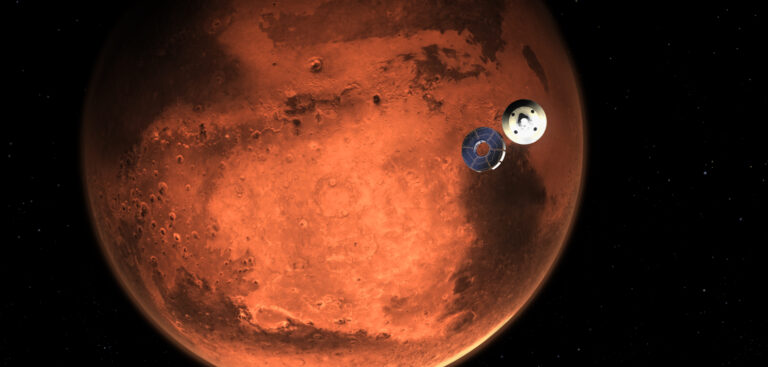NASA’s Perseverance rover, which is carrying scientific instruments including Finnish-made humidity and pressure instrumentation provided by the Finnish Meteorological Institute (FMI) with sensors supplied by Vaisala, landed safely on Mars last night (February 18).
The Perseverance, launched in July 2020, landed on the ancient river delta in Jezero Crater, which according to NASA is the optimal place to find traces of ancient life. To collect data and samples from the Red Planet, NASA is working together with a group of trusted scientific partners.
The FMI’s instrumentation is part of the Spanish-led consortium’s Mars Environmental Dynamics Analyzer (MEDA). The MEDA instrumentation kit is basically a Martian weather station that takes a wide range of atmospheric measurements: temperature, wind speed and direction, pressure, relative humidity, and the amount and size of dust particles. Vaisala’s pressure and humidity sensors are similar, but more advanced, to the ones sent to Mars on the Curiosity rover in 2012.

“The rover’s equipment needs to operate in the harsh Martian environment, with very low-pressure conditions and cold temperatures, and it must be able to resist possible global dust storms. In addition to the environmental aspects and potential dangers of the landing itself, the distance between Mars and Earth makes the mission challenging. There is no one to fix the instrumentation if something goes wrong,” explained Maria Genzer, head of the Planetary Research and Space Technology Group at FMI.
The Perseverance and Mars Science Laboratory (MSL) Curiosity will operate around 2,000km from each other. Together they will create a small-scale atmospheric observation network on Mars.
“Mars and Earth are like rocky sisters. They both have seasonal variation, ice caps, similar declination of axis, length of day, and rocky consistency. Mars offers us a basic model of Earth – without vegetation, water, human life, cities, and other ‘noise’ we encounter on Earth,” noted Genzer.
“Interplanetary atmospheric research offers us tools to better understand our current habitat. And who knows what other findings there might be.”



